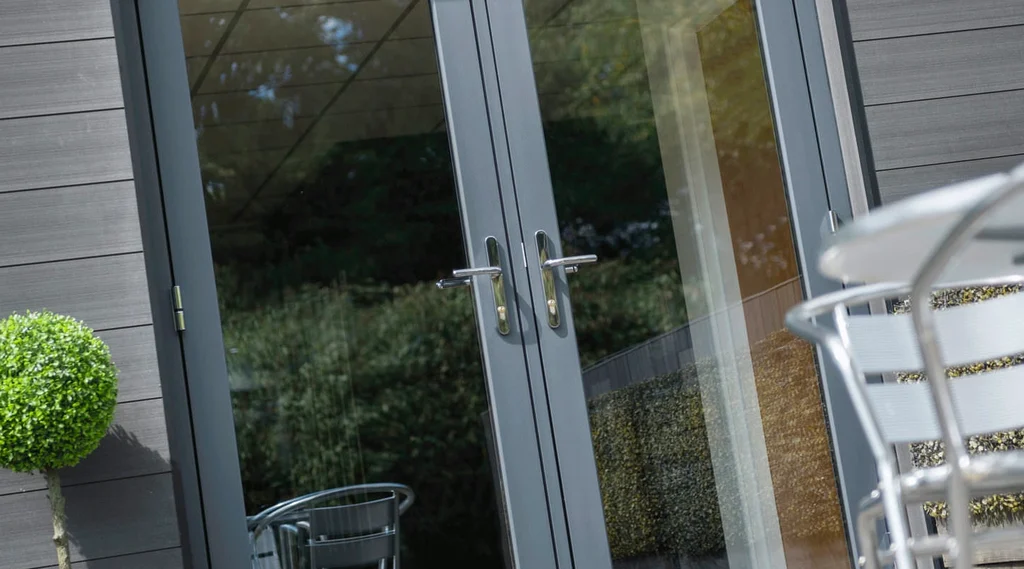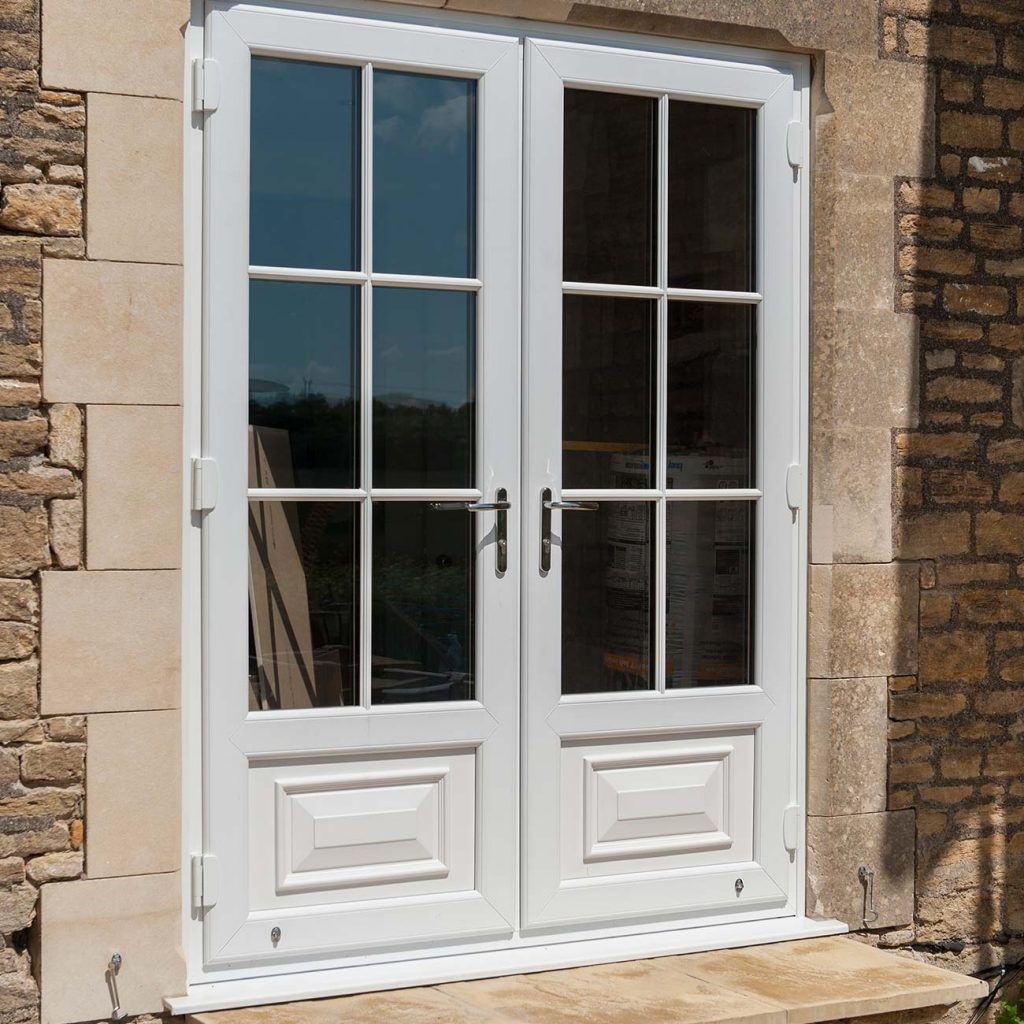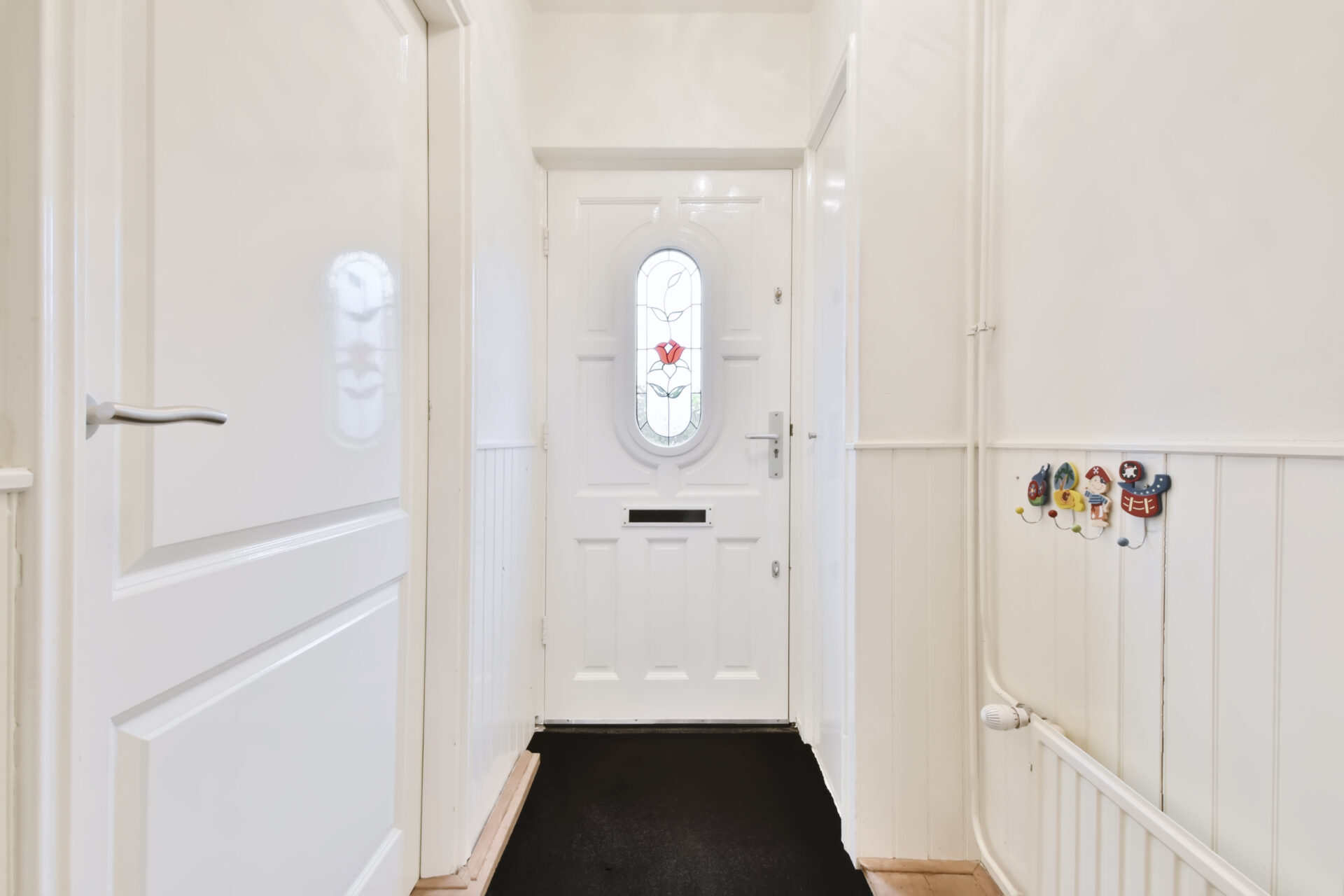Last Updated on 6 February 2025 by Tia Ellahi
uPVC Door: Are they worth it?
For French doors or back doors, a uPVC door is an affordable, low-maintenance option, but composite or aluminium composite doors are better for front doors due to superior security and durability.
uPVC doors have been a staple in UK homes for decades, praised for their affordability and low maintenance. But with the rise of more advanced materials like composite and aluminium composite doors, many homeowners are asking: Are uPVC doors still worth it?
In this guide, we’ll explore the pros and cons of uPVC doors, how they compare to other options, and whether they’re still the right choice for your home.
What We’ll Cover..
- What exactly is a uPVC door?
- Why uPVC doors became so popular
- The rise of composite doors: A better alternative?
- The environmental impact of uPVC doors
- Style options: What you can get with uPVC vs composite doors
- Where uPVC still shines: French and glazed doors
- FAQs
What is a uPVC Door?
Let’s start with the basics. uPVC (unplasticised polyvinyl chloride) is a rigid, durable plastic commonly used for windows and doors. Unlike traditional PVC, uPVC doesn’t contain plasticisers, which makes it more rigid and weather-resistant.
uPVC doors are lightweight, affordable, and require little maintenance—just a simple wipe-down with soapy water keeps them looking fresh. You’ve likely seen them as white front or back doors, but nowadays, you can also find options like uPVC black doors for a more modern look.
Why Were uPVC Doors So Popular?
Back in the 80s and 90s, uPVC doors were the go-to choice for UK homeowners, and it’s easy to see why:
- Affordability: uPVC doors are one of the cheapest door options on the market.
- Low Maintenance: No need for sanding, painting, or sealing—just wipe clean.
- Weather Resistance: uPVC doesn’t warp or rust, making it ideal for the UK’s unpredictable weather.
- Energy Efficiency: With good insulation properties, uPVC helps keep the cold out.
But as with all things, time brings change—and that’s where composite and aluminium composite doors come in.
The Rise of Composite Doors: A Better Alternative?
While uPVC front doors were once king, many homeowners now prefer composite doors for their superior durability, security, and style. So, what’s the difference?
1. Strength & Security
Composite doors combine materials like GRP (glass-reinforced plastic), timber, and insulating foam to create a door that’s far stronger than uPVC. Plus, they often come with high-security locks that outperform standard uPVC door handles and locks.

2. Aesthetic Appeal
While uPVC doors come in various colours, they often lack the premium finish of composite doors. Composite options can mimic the look of real timber, giving you the charm of wood without the upkeep.
3. Energy Efficiency
Though uPVC doors are good insulators, composite doors have been carefully engineered to offer even better thermal performance, helping reduce energy bills in the long run.
The Environmental Impact: Is uPVC Eco-Friendly?
With sustainability being a top priority for many homeowners, it’s important to consider the environmental impact of your door choice.
1. uPVC Door and the Environment
While uPVC doors are technically recyclable, the process of producing uPVC is energy-intensive and not the most environmentally friendly. Older uPVC doors often end up in landfills because they’re difficult to recycle once mixed with other materials like metal locks or glass.
Additionally, uPVC can degrade over time when exposed to harsh sunlight, releasing potentially harmful chemicals into the environment.
2. Composite Doors: A Greener Option?
Though composite doors are made from multiple materials, they’re designed to last longer—typically over 30 years—reducing the need for frequent replacements. Some composite doors also incorporate recycled materials and have better thermal efficiency, which means lower energy consumption over time.
Style Options: What Can You Get with uPVC vs Composite?
When it comes to style and aesthetics, both uPVC and composite doors offer a range of options, but composite doors definitely have the edge if you’re looking for something more bespoke.
1. uPVC Door Styles
Traditionally, uPVC doors were limited to simple white designs. However, modern advancements have expanded the range to include colours like black, grey, and even woodgrain finishes. But despite these improvements, the material may still look plasticky compared to more premium options.
Popular styles include:
- uPVC black doors for a sleek, modern look.
- uPVC glazed doors for letting in natural light.
- uPVC back doors for simple, functional use.
2. Composite Door Styles
Composite doors shine when it comes to customisation. You can choose from a vast array of colours, finishes, and designs to match your home’s aesthetic—whether that’s a traditional timber-effect door or a bold, modern colour.
Options include:
- Timber-effect finishes that mimic natural wood without the upkeep.
- Bold colours like navy, red, or anthracite grey.
- Custom glazing and decorative glass for a unique touch.
- A wide range of hardware options, from modern stainless steel to traditional brass.
Where uPVC Still Shines: French and Glazed Doors
While uPVC may no longer be the top choice for front doors, it’s still a fantastic option for certain areas of your home.
1. uPVC French Doors
uPVC French doors remain a popular choice for connecting your indoor and outdoor spaces. They’re lightweight, easy to open, and provide excellent insulation for patio areas.
2. uPVC Glazed Doors
For back entrances or utility rooms, uPVC glazed doors offer practicality and affordability. They’re weather-resistant, easy to clean, and let in plenty of natural light.

The Downsides of a uPVC Door
Basic Aesthetic Appeal
Although modern uPVC doors come in different colours like black and grey, they still have a plastic-like finish that lacks the premium look of composite or timber doors. Customisation is also limited compared to composite doors, which offer realistic woodgrain textures and a broader range of design options.
Security Limitations
While uPVC doors can be fitted with good locks, the material itself isn’t as strong as composite or aluminium. A composite door has a solid core that makes it more resistant to forced entry, whereas uPVC external doors are generally more lightweight and less robust.
Less Premium Feel
For homeowners looking to add value to their property, composite or aluminium composite doors offer a more high-end appearance that appeals to buyers. uPVC doors, while practical, may not enhance kerb appeal in the same way.
Final Thoughts: Is a uPVC Door Still the Right Choice?
While uPVC doors remain a popular choice for homeowners seeking affordability and low maintenance, they may no longer be the best option for your main entrance. With the rise of composite and aluminium composite doors, you can now enjoy superior durability, enhanced security, and greater aesthetic flexibility—all with minimal upkeep.
That said, uPVC doors still have their place, especially when it comes to uPVC French doors and uPVC glazed doors. These options are perfect for brightening up living spaces, connecting indoor and outdoor areas, and adding practicality to utility rooms or back entrances.
At GFD Homes, we offer a fantastic selection of composite and aluminium composite front doors to elevate your home’s style and security. But if you’re in the market for uPVC French doors or glazed doors, we’ve got you covered too!
FAQs About the uPVC Door
How much should a uPVC door cost?
A standard uPVC front door can cost anywhere from around £250 to £600, depending on the style, glazing, and hardware. However, premium materials like composite doors will offer better long-term value despite a higher upfront cost.
What is better, a PVC or uPVC door?
uPVC doors are more rigid and durable than regular PVC doors, making them better suited for external use. They offer improved weather resistance and security, which is why they use to be the go-to option for front and back doors in the UK.
Can I fit a uPVC door myself?
While it’s possible for experienced DIYers to fit a uPVC door, professional installation ensures a perfect fit, better insulation, and improved security. A poorly fitted door can lead to draughts, leaks, and alignment issues over time.
What is a major disadvantage of using uPVC materials for doors?
The biggest downside of uPVC doors is their lack of strength compared to composite or aluminium doors. Also, they don’t tend to offer the same level of security or aesthetic appeal.
